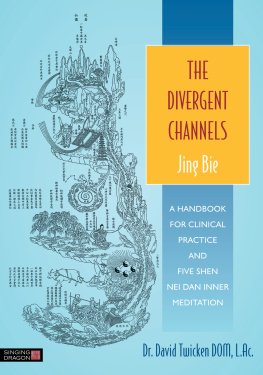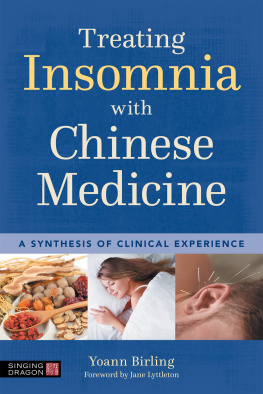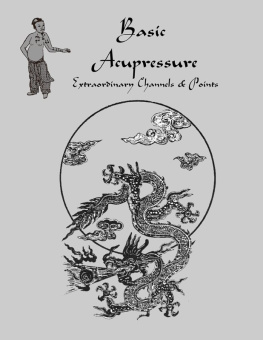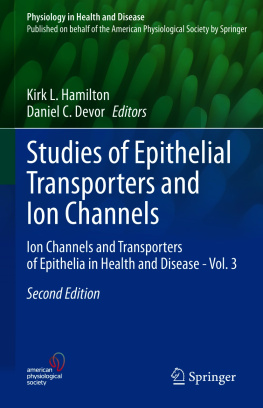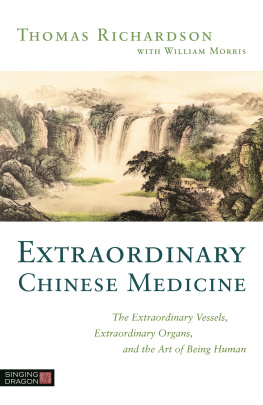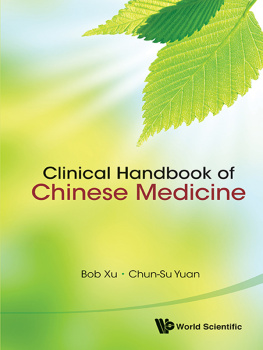A CKNOWLEDGMENTS
I have been fortunate to study with some very special people. One common quality among all of them was their encouragement to study a wide range of teachings. I would like to give special thanks to Master Mary Chow, who taught me how to bring joy and love to practicing Tai Chi Chuan; to Master Joseph Yu for sharing the importance of studying classics and learning to apply them in practice; and to Master Peter Leung for showing how to bring creativity into the practice of Chinese metaphysics. A special thank you goes to Master Mantak Chia for sharing qi gong, meditation, internal alchemy, and Taoism with compassion, respect, and love, and to Master Jeffrey Yuen for sharing his Taoist tradition in a humble, caring, and inspirational way.
I would like to thank Jessica Kingsley, and the team at Singing Dragon, for publishing this book. Thank you, Molly Maguire, my very good friend Gregory E. Leblanc, L.Ac., and Douglas Eisentark, L.Ac., for your editorial contributions. And thank you, Steven Sy, for your editing contribution on the Nei Dan chapters ().
Credits
Dr. Jerry Alan Johnson, Chinese Medical Qi Gong Therapy, International Institute of Medical Qi Gong:
The Chong channel
The Ren channel
The Du channel
The Yang Wei channel
The Yin Wei channel
The Yang Qiao channel
The Yin Qiao channel
The Dai channel
The lower Dan Tian
a) The Yang Wei channel and b) The Yang Qiao channel
a) The Yin Wei channel and b) The Yin Qiao channel
Mantak Chia and the Universal Healing Tao:
The three Dan Tian
The modern Nei Jing Tu
The Microcosmic Orbit
The Dai channel
The Chong channel
The Nei Jing Tu
A FTERWORD
I was first introduced to the Eight Extraordinary Channels while studying Taoist meditation. These channels are also called the eight psychic channels. They are the links between Jing and shen . I was fortunate to learn about these channels from that viewpoint; it gave me a very wide view of their functions. Most importantly, I was able to feel them. I have taught workshops and retreats on this inner meditation (Nei Dan). These practices have had a profound influence on the participants, as well as myself. It is my favorite meditation to practice and teach.
The Eight Extraordinary Channels are an essential aspect of Chinese medicine and Nei Dan. I wrote this book for three main reasons. The first is to present a practical guide to help practitioners use the Eight Extraordinary Channels in clinical practice. The second is to provide information to people interested in learning more about healing, qi gong, meditation, and Nei Dan (inner meditation). And the third reason is to create a bridge between the practice of Chinese medicine, with a focus on the psycho-emotional and spiritual aspects of our life, and Nei Dan inner meditation. Understanding this bridge allows the practitioner of Chinese medicine to assist in the life path of each patient. It also provides a person with a deeper insight to the inner workings of their cultivation practices.
I hope this book assists you in your clinical practice, meditation, and spiritual path. Feel free to contact me via my website www.healingqi.com with questions and feedback on this book.
With best wishes,
David Twicken
B IBLIOGRAPHY
Bertschinger, R. (2011) The Secret of Everlasting Life: The First Translation of the Ancient Chinese Text of Immorality . London: Singing Dragon.
Chace, C. and Shima, M. (2010) An Exposition on the Eight Extraordinary Vessels: Acupuncture, Alchemy, and Herbal Medicine. Seattle, WA: Eastland Press.
Chia, M. (1983) Awaken Healing Energy through the Tao . Santa Fe, NM: Aurora Press.
Chia, M. (1995) Inner Alchemy of the Tao . Chiang Mai, Thailand: Healing Tao Co. Ltd.
Chia, M. (2009) Fusion of the Eight Psychic Channels: Opening and Sealing the Energy Body. Rochester, VT: Destiny Books.
Ellis, A., Wiseman, N. and Boss, K. (1989) Grasping the Wind: An Exploration into the Meaning of Chinese Acupuncture Point Names. Brookline, MA: Paradigm Publications.
Harper, D. (2007) Early Chinese Medical Literature: The Mawangdui Medical Manuscripts . London: Kegan Paul International.
Jacob, J. (1996) The Acupuncturists Clinical Handbook . Integrative Wellness.
Johnson, J.A. (2000) Chinese Medical Qi Gong Therapy . Pacific Grove, CA: International Institute of Medical Qi Gong.
Komjathy, L. (2008) Mapping the Daoist Body (1): The Neijing tu in History. Journal of Daoist Studies 1 , 6792.
Komjathy, L. (2009) Mapping the Daoist Body (2): The Text of the Neijing tu . Journal of Daoist Studies 2 , 64108.
Larre, C., Rochat de la Vallee, E. and Hill, S. (1997) The Eight Extraordinary Meridians . Monkey Press.
Luk, C. and Yu, K.Y. (1999) Taoist Yoga: Alchemy and Immortality . San Francisco, CA: Red Wheel/Weiser.
Maciocia, G. (2006) The Channels of Acupuncture: Clinical Use of the Secondary Channels and the Eight Extraordinary Vessels . Oxford: Churchill Livingstone.
Matsumoto, K. and Birch, S. (1986) Eight Extraordinary Channels . Brookline, MA: Paradigm Publications.
Ni, Y. (1996) Navigating the Channels of Traditional Chinese Medicine . San Diego, CA: Complementary Medicine Press.
Schipper, K. (1994) The Taoist Body . Berkeley, CA: University of California Press.
Twicken, D. (2002) Treasures of Tao . Bloomington, IN: iUniverse.
Twicken, D. (2011) I Ching Acupuncture: The Balance Method. Clinical Applications of the Ba Gua and I Ching . London: Jessica Kingsley Publishers.
Veith, I. (1966) The Yellow Emperors Classic of Internal Medicine . Berkeley, CA: University of California Press.
Wang, S.-H and Yang, S. (1997) The Pulse Classic: A Translation of the Mai Jing . Boulder, CO: Blue Poppy Press.
Wu, J. (2002) Ling Shu or The Spiritual Pivot . Hawaii: University of Hawaii Press.
Wu, N. and Wu, A. (2002) Yellow Emperors Canon of Internal Medicine . Beijing, China: China Science Technology Press.
Yang, C. (2004) A Systematic Classic of Acupuncture and Moxibustion . Boulder, CO: Blue Poppy Press.
by the same author
I Ching AcupunctureThe Balance Method
Clinical Applications of the Ba Gua and I Ching
ISBN 978 1 84819 074 0
eISBN 978 0 85701 064 3
of related interest
Daoist Nei Gong
The Philosophical Art of Change
Damo Mitchell
Foreword by Dr Cindy Engel
ISBN 978 1 84819 065 8
eISBN 978 0 85701 033 9
Heavenly Streams
Meridian Theory in Nei Gong
Damo Mitchell
Foreword by Robert Aspell
ISBN 978 1 84819 116 7
eISBN 978 0 85701 101 5
The Great Intent
Acupuncture Odes, Songs and Rhymes
Richard Bertschinger
ISBN 978 1 84819 132 7
eISBN 978 0 85701 111 4
Heavenly Stems and Earthly BranchesTianGan DiZhi
The Keys to the Sublime
Master Zhongxian Wu and Dr Karin Taylor Wu
ISBN 978 1 84819 151 8
Card Set ISBN 978 1 84819 150 1
C HINESE D YNASTIES
Dynasty | Years |
Pre-historic period |
Yangshao | 5000 BC |
Longshan | 2500 BC |
Xia | 21001600 BC |
Historic period |
Shang | 16001045 BC |
Zhou | 1045221 BC |
Western Zhou | 1045771 BC |
Eastern Zhou | 770256 BC |
Spring and Autumn Period | 722481 BC |
Warring States Period | 403221 BC |
Qin | 221206 BC |
Han | 206 BC AD 220 |
|
Next page

